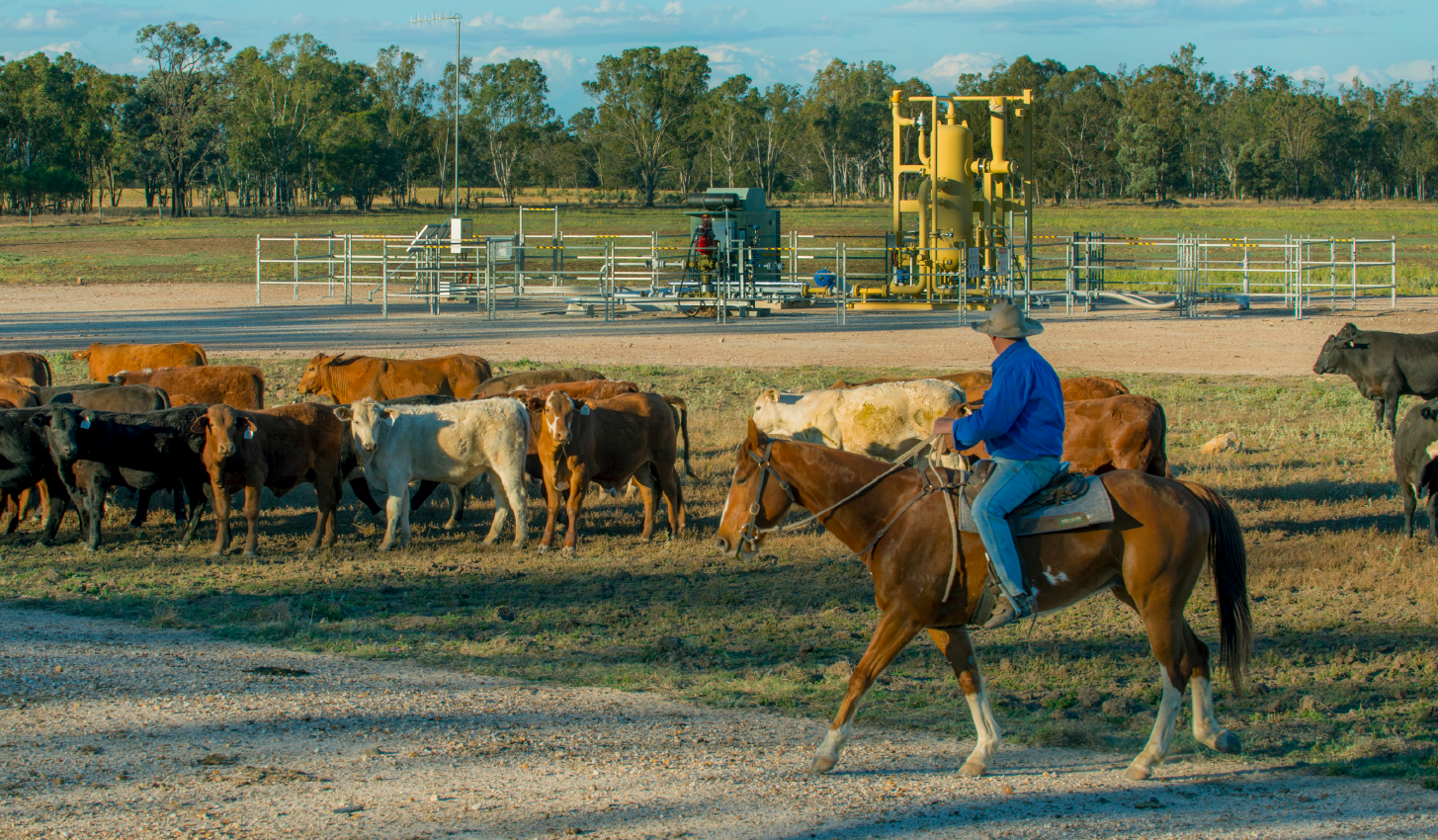Economic and social contribution
Petroleum and gas, agriculture sector benefits to Queensland
The coexistence between the agricultural and gas sectors provides diversified opportunities for regional communities and supports the Queensland economy.
The onshore gas industry is not a short-term guest in the shared landscape with agriculture and rural and regional communities. The development curve of the gas sector is not fixed, it is constantly evolving; not only within existing areas, but also expanding into new greenfield areas.
Queensland’s agricultural sector and the petroleum and gas industry are world renowned and contribute substantially to the state’s function and economy. Both sectors provide essential goods and services to the state.
The agricultural sector provides food, textiles and numerous other products. The gas sector produces fuels that are used for cooking, heating, manufacturing and electricity generation. These sectors support regional communities through jobs and expenditure. Both sectors are largely export driven, with markets primarily in Asia.
Queensland has the largest area of agricultural land of any Australian state or territory and the highest proportion of land area (83%) in Australia dedicated to agriculture
A number of LGAs with the highest gross value of agricultural production also support Queensland’s most productive gas fields
Queensland had the third highest value of agricultural commodities produced of all Australian states and territories in FY21
As of FY21, petroleum and gas tenures cover 8.6% of the state, but the surface footprint of the sector is much smaller
Petroleum and gas tenures exist in 27 LGAs, while commercial agricultural activities occur in almost all LGAs except for some in Cape York
Surat Basin population
Local residents vs non-residents
Sharp increases in non-resident workers can place strains on regional communities. This was previously experienced during the initial CSG development as a result of CSG workers residing in regional towns that hosted gas development activity. In the current landscape, housing shortages in the Surat Basin local government areas are being attributed to people such as non-resident solar farm construction workers and people moving to the regions due to higher cost of living in cities. Local communities have reported that this is making it difficult for local businesses to secure workers.
Non-resident population, Surat Basin LGAs between 2008 and 2021
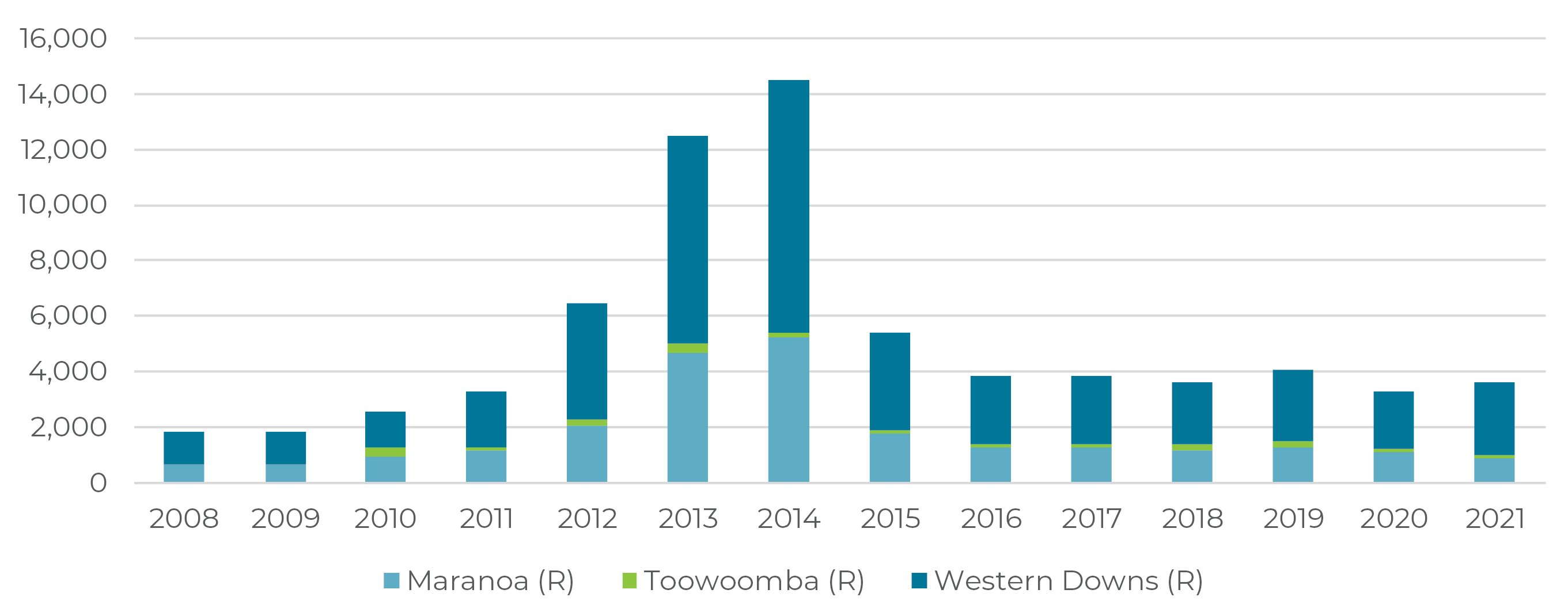
Agricultural sector contribution to Queensland
The Gross Value of Production (GVP) is the value of recorded production at wholesale prices realised in the marketplace (e.g. cattle sold at saleyards, sugarcane at the mill door, fruit and vegetables at the wholesale market). It is derived by multiplying the output from each primary industry by the average wholesale price paid to producers.
In FY21, the GVP to the farm gate in Queensland was $14.74 billion. First round processing which includes meat processing, sugar processing, fruit and vegetable processing, flour milling and feed processing, cotton ginning, and milk and cream processing adds a further $3.73 billion in production value for Queensland.
The Department of Agriculture and Fisheries (DAF) recorded FY21 as the second consecutive year on year growth in total value of production following declines after the sector experienced one of the worst droughts in over 100 years.
Agriculture to the farm gate employed approximately 74,300 people in FY21. While this represented a modest decrease from FY20, the annual average growth rate over the past 5 years is 20.7%
Gross Value of Production
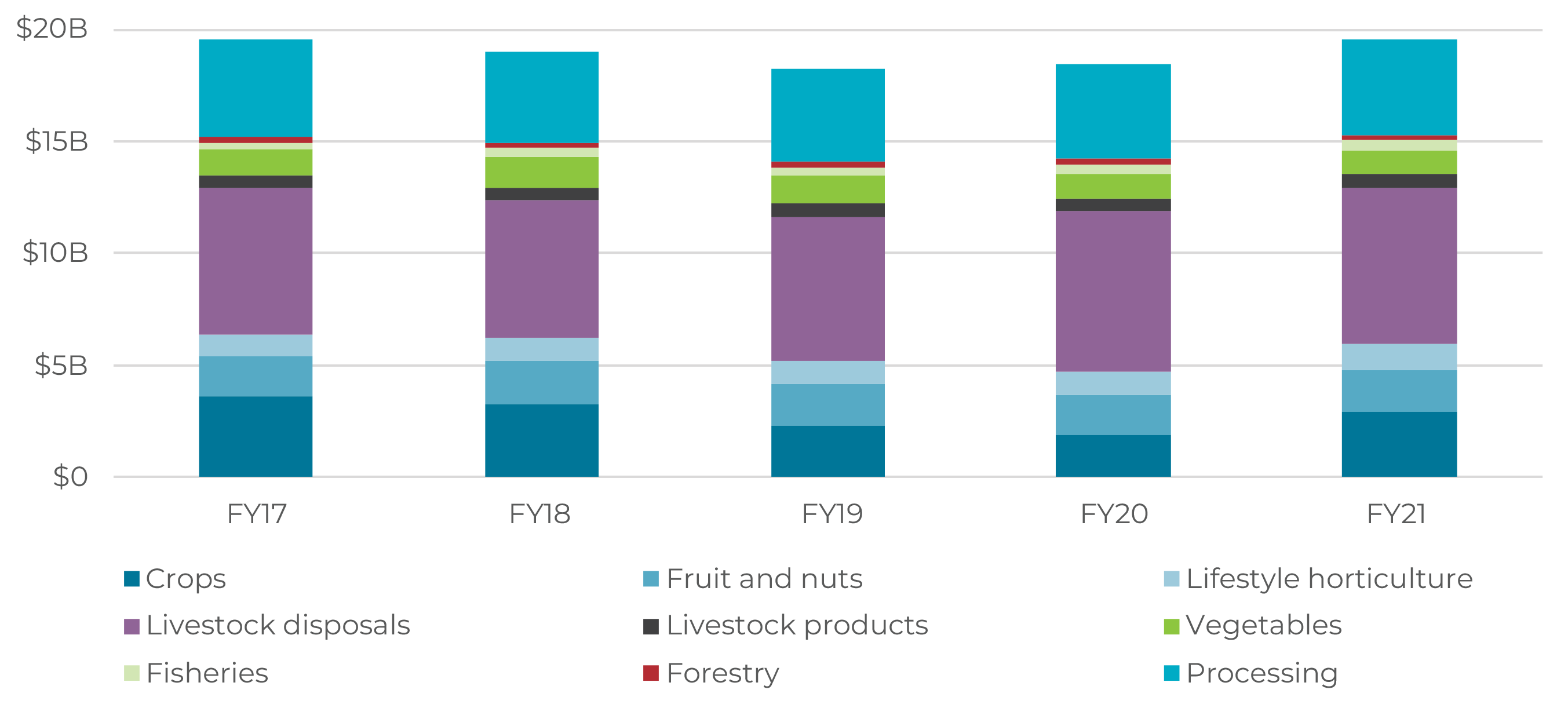
Petroleum and gas industry contributions to Queensland
Every Queensland resident benefits from the resources sector. Resource royalties help pay for government services like schools, hospitals and roads, as well as police, teachers and healthcare workers. This is in addition to supporting thousands of regional businesses and jobs, and generating export revenue that grows our economy. The people who work in Queensland’s resources sector also spend a portion of their wages/salaries purchasing such things as produce that is farmed in Queensland.
Queensland petroleum royalties
Compared to coal, petroleum royalties make up a smaller share of total royalties, though petroleum royalties have grown strongly as the export industry has matured. Most of the LNG produced in Queensland is sold under long-term contracts linked to oil prices, while the production level of the three major LNG plants is expected to be relatively stable.
Petroleum royalties (which include CSG, oil, condensate, LPG, and conventional gas) represent approximately 10% of the total royalties collected in Queensland. These royalties are then shared across Queensland’s education, health, transport and roads, and policing sectors.
Queensland petroleum royalties

INSIGHTS
From 1 October 2020, Queensland’s petroleum royalties transitioned to being calculated based on applying a tiered royalty rate to the volume of petroleum produced (rather than the previous system of royalties being calculated as 12.5% of the determined ‘wellhead value’ of petroleum disposed of), with a rate based on the reference price for the producer.
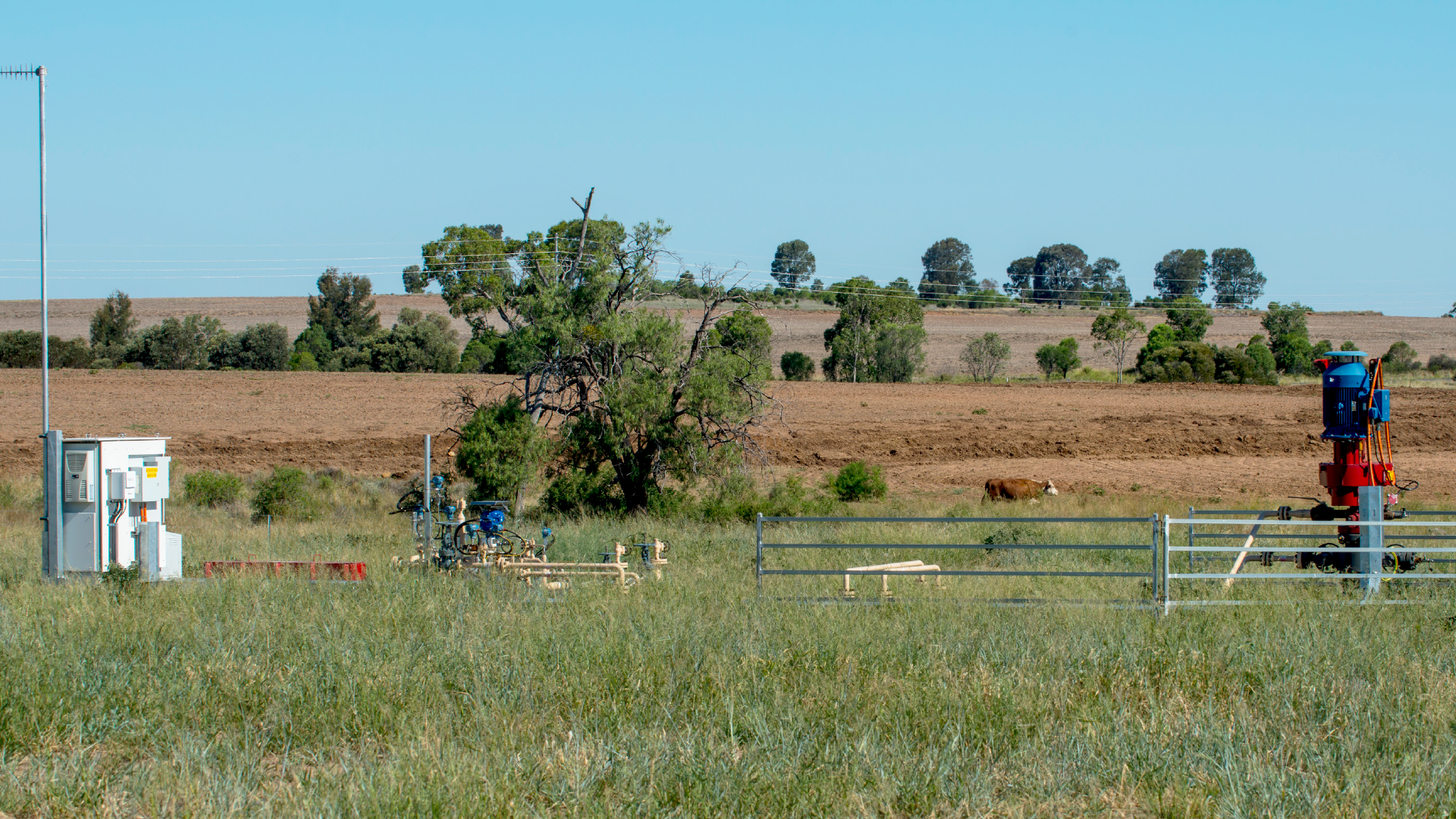
Petroleum and gas industry jobs in Queensland
The gas industry employed 4,246 direct FTEs in FY21, equating to 0.2% of total state employment and $730 million in wages. Indirect employment was estimated to be 23,044 FTEs, bringing the total direct and indirect employment to 1.1% of total state employment and an additional $1.99 billion in wages and salaries. It is estimated that the total direct and indirect gas industry wages and salaries for FY21 were approximately $2.72 billion.
Gas industry employment, wages and salaries Queensland in FY21

Community contributions
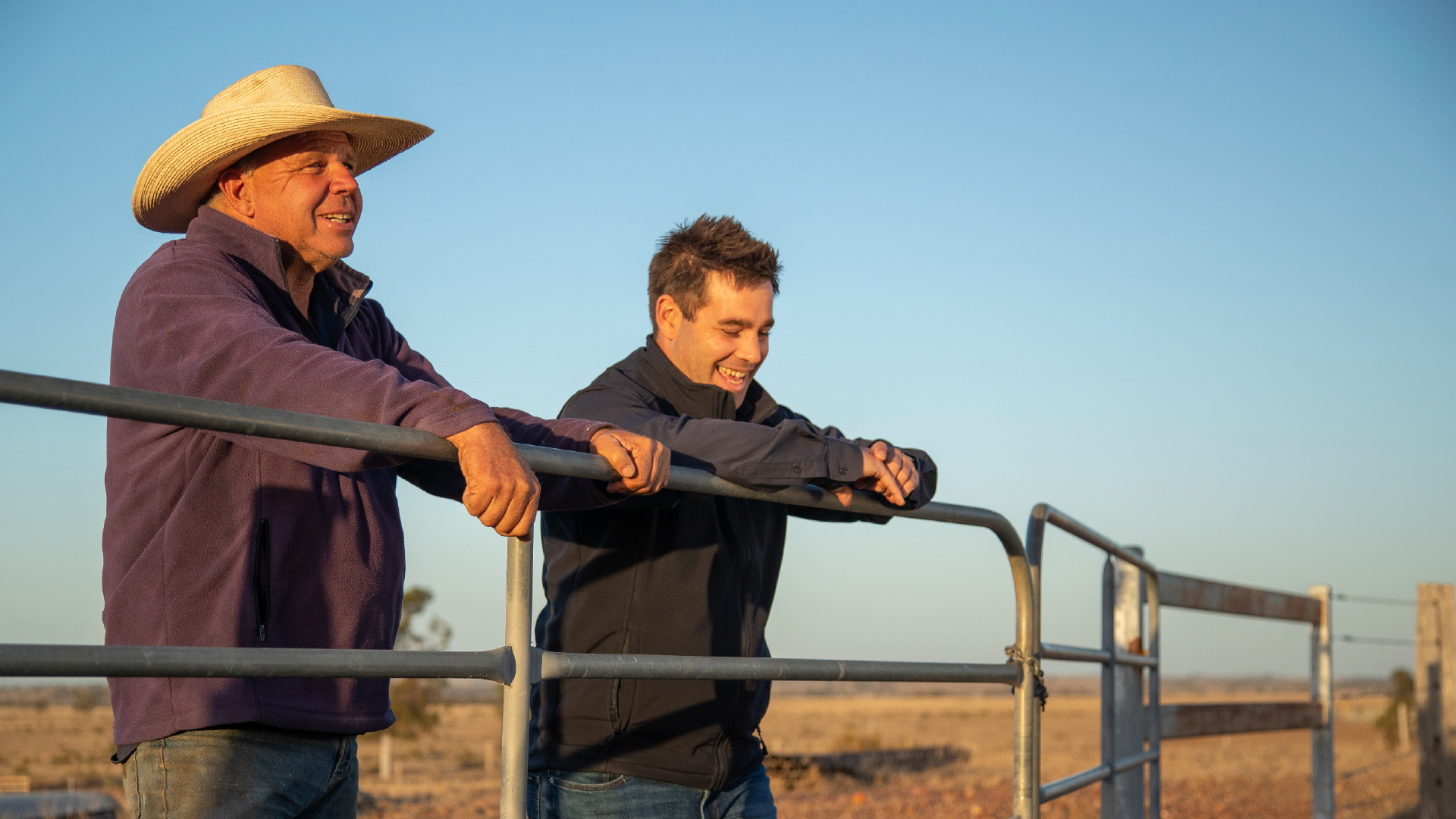
Queensland’s petroleum and gas industry direct expenditure included $3.1 billion spent on local goods and services in FY21.
This benefitted 2,497 local businesses and 279 community organisations across Queensland. By far the largest number of these supported businesses were in Brisbane (1,454), followed by the Darling Downs Region (327), Fitzroy Region (254) and South West Region (182).
CASE STUDY
QGC helping community groups in the Western Downs

Community Grant writer, Kate Bradley assisting a community group member with their grant application
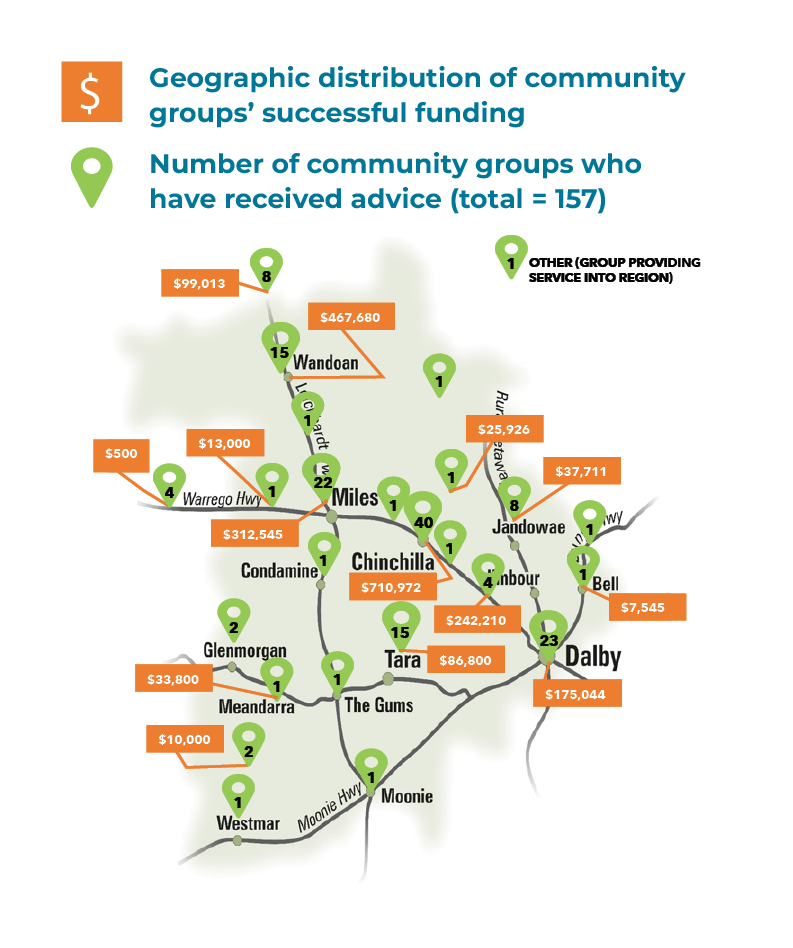
For the past three years Kate Bradley has helped 157 community groups across the Western Downs region of Queensland gain access to various grants and funding in her role as Community Grants Writer.
Kate’s role is funded by Shell QGC’s business and delivered by the Murilla Community Centre. Kate is based across the region’s community centres, helping to research, identify and access funding opportunities. She also works with community groups to build their grant-writing capabilities so they can secure additional investment.
Since August 2019, Kate has helped the region reach a significant milestone, with almost $4.5 million in community grants achieved for the Western Downs region. Some of the successful grants include:
- upgrades to facilities for the Wandoan Show Society;
- a new administration building for the Chinchilla Polocrosse Club;
- securing a ride-on mower for the Dalby Pioneer Park Museum;
- Community Drought Support Program for the Tara Neighbourhood Centre, Murilla Community Centre and Chinchilla Family Support Centre; and
- traineeship program by Chinchilla Community Centre for the long-term unemployed and marginalised groups.
Kate’s focus is on helping community centres/groups identify how to turn priorities into activities, prepare documents, manage budgets and detail what’s needed to ensure successful delivery of a project. She has more than a decade’s experience developing funding proposals and managing projects from conception through to delivery, most recently at the Queensland University of Technology.
“To be able to help community centres and community groups and contribute to the growth of the region, I couldn’t pass it up,” she said. Murilla Community Centre’s, Cecily Brockhurst said having access to someone with Kate’s experience and expertise was a huge positive.
“The need for a grants writer came out of community discussions with Shell’s QGC business and it’s great to see them listen and work with us to respond to that need,” Cecily said.
“Community groups are made up of volunteers who often aren’t sure where to start when looking to access funding to support their project. To have Kate available to help build up that capacity is a real win for our region.”
If you’re from a community group in the Western Downs region and need assistance finding a grant opportunity or getting your funding application across the line, please contact Kate Bradley via mccmgrants@bigpond.com
CASE STUDY
Coexistence videos
Trevor Kehl
Discover what Trevor Kehl, a property owner, thinks about the gas industry operating in his farm, and why coexistence is critical.
Rob Fraser
Rob Fraser, a property owner in Chinchilla, shares his thoughts on coexistence with the gas industry operating in his property.
Ali Davenport
CEO Toowoomba and Surat Basin Enterprise, explains why sustainable coexistence with the agricultural sector and the gas industry is essential to the continued growth and prosperity of local communities.


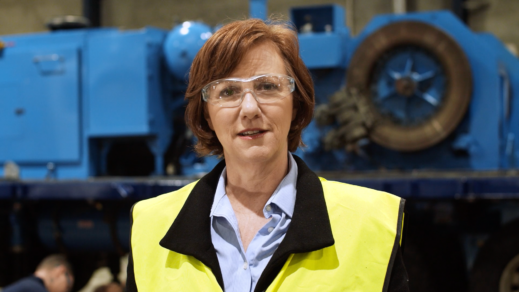
Find out more
For additional information, insights and data, please download a PDF.
📄
Download topic PDF
Economic and social contribution
📑
Download full report PDF
Shared Landscapes – Industry Trends
